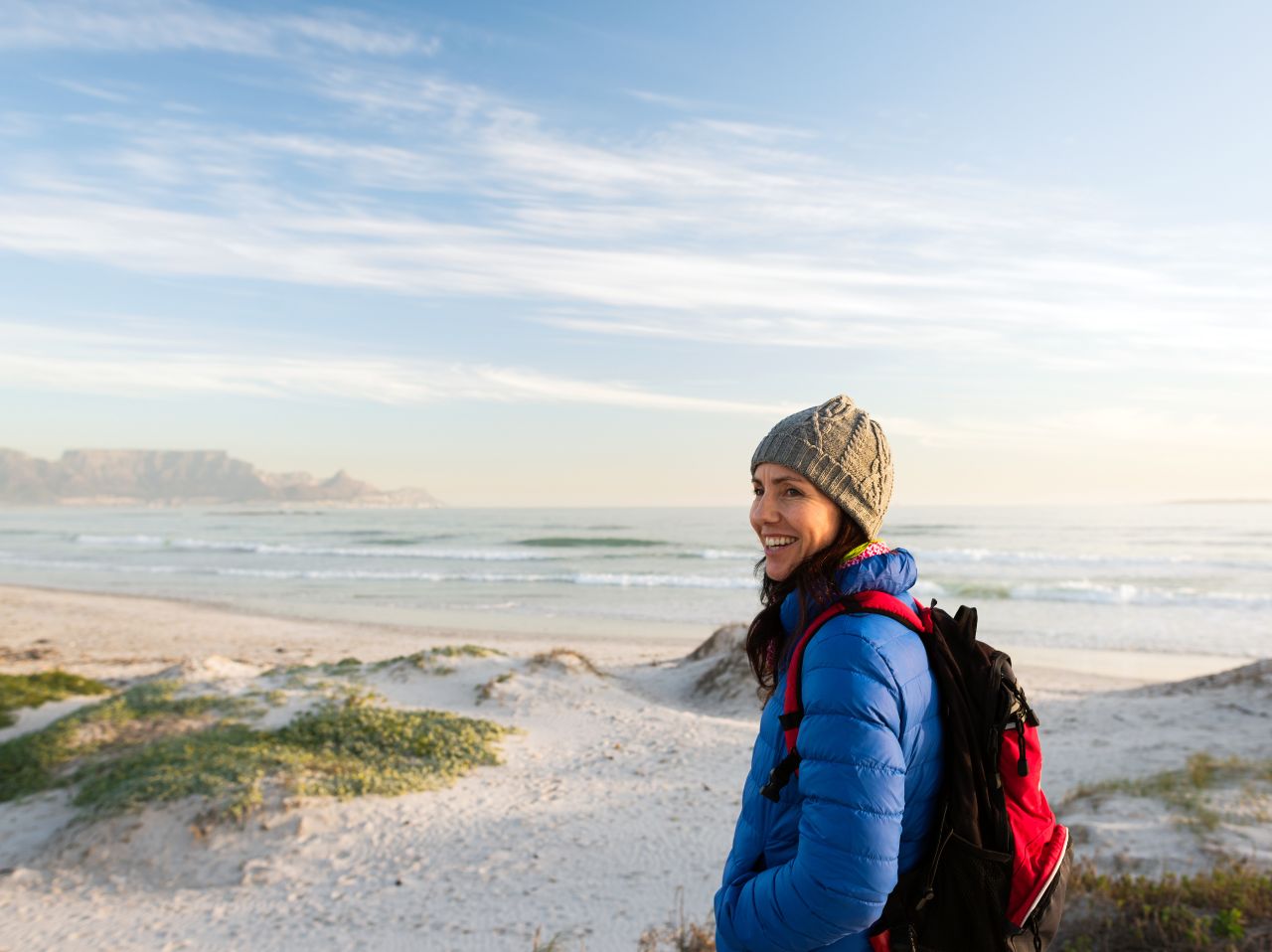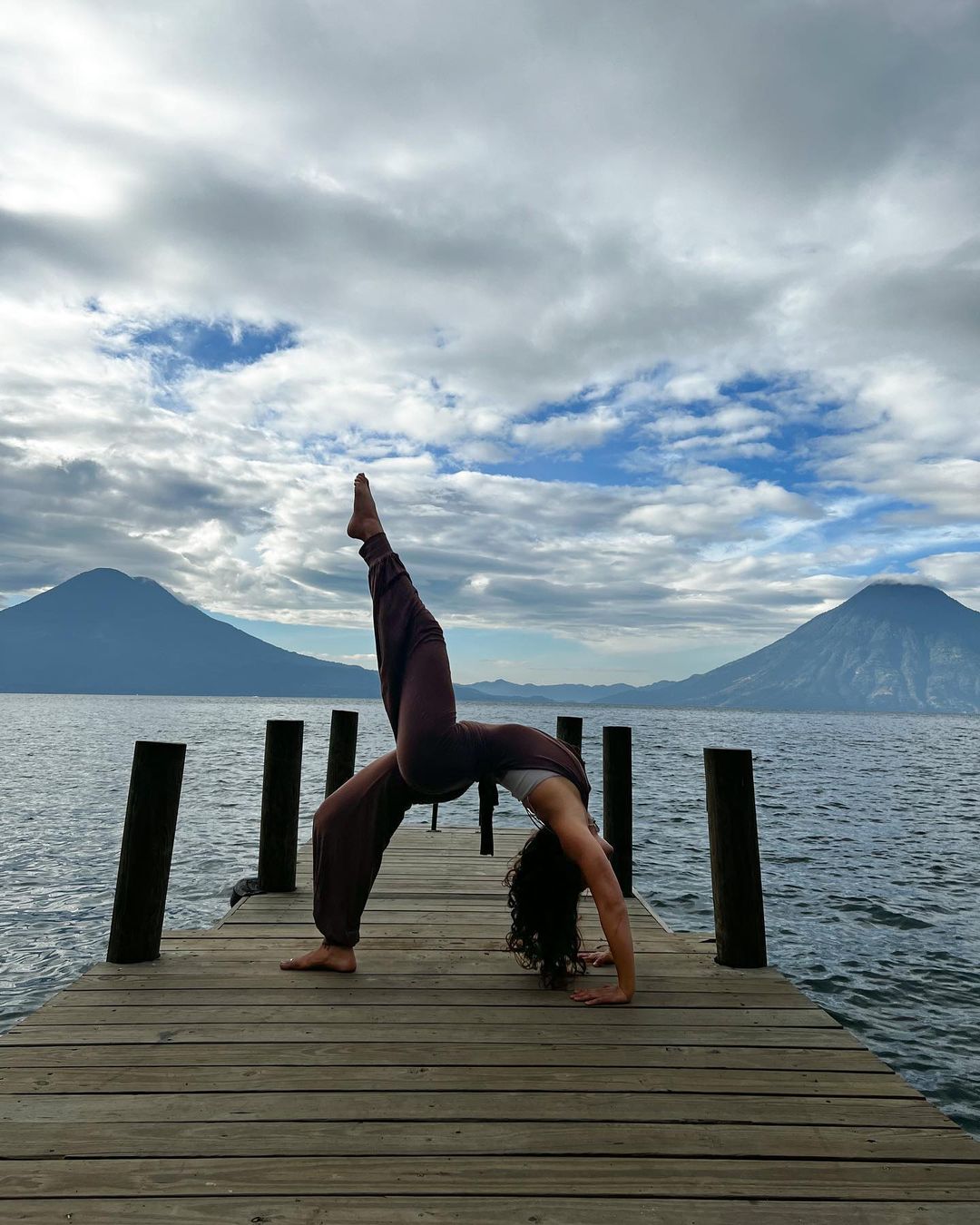The Dream: What is a Digital Nomad?
Has it been your dream to travel the world ever since you were young? Back then, it might have been an impossible dream but now, millions of people are doing it. How?
They’re digital nomads–people who work and travel the world full-time. They rely on their laptops, phones, and WiFi to be able to work anywhere. At the same time, they discover new places, meet new people, and learn about various cultures from the inside out.
It may seem like a luxurious lifestyle decades ago but due to the rise of remote work worldwide, anyone can do it now–including you!
Table of Contents
The Dream: What is a Digital Nomad?
3 Things You Need to Prepare
1. Your “Home” Life
2. Your Career
3. Your Finances: Costing, Saving, & Budgeting
The Steps: Things to Prepare
1. Nomad Insurance
2. Banking
3. Connectivity
4. Your Nomad Gear
5. Taxes
6. Emergency Funds
Your First Trip: Planning Where to Go
1. Location & Time Zone
2. Look for Nomad Hotspots
3. Research Visa Requirements
4. Accommodations
5. Fun & Play
6. Find a Community
Final Steps
Take Your Time
Highlights of the Digital Nomad Lifestyle
● You get to travel the world at your own pace.
● You can make incredible memories all over the world and check off your bucket list of travel dreams.
● You are free from office politics and the 9-5 timetable.
● You’re your own boss. You get to set your work hours, vacation times, and hustle times.
Challenges of the Digital Nomad Lifestyle
● Your productivity can suffer if you don’t manage your time properly.
● Moving constantly can get tiring if you don’t pace yourself.
● You may miss your family back home.
But worry not, because these challenges can be overcome, many seasoned nomads have done it! And these obstacles are nothing compared to the happiness brought by the freedom and adventures of being a digital nomad.
3 Things You Need to Prepare
Before you start on your journey, there are quite a few things you need to prepare and bases you need to cover. Here are 3 things you need to arrange before you start packing up:
1. Your “Home” Life
The first base you need to cover is your “home” life. What ties do you have with your current home base? It’s not just apartments and cars to think about for most people. There are also furniture, appliances, gym memberships, and other subscriptions.
Minimalism is the way of life for digital nomads, for both belongings and budgeting. Start living a minimalist life while you’re still home by cutting down your costs and getting rid of items you don’t need and rarely use.
Digital nomads bring their whole life with them in a backpack or a suitcase, so preparing and minimizing your life back home is a must.
2. Your Career
There are only three kinds of digital nomads–employees, freelancers, and entrepreneurs.
● Remote Work
If you’re currently working for a company, you can ask your current employer to let you work online. If that’s not possible, you can look for other career opportunities with remote companies.
Pro Tip: Look for remote companies instead of a company offering a remote job. Some companies hire remote employees but still have other employees reporting in the office. Sometimes, managers have a bias towards teammates who are in the office compared to remote workers.
Remote companies, on the other hand, operate 100% remotely so there are no biases among teammates. There will also be no logistical concerns because everyone, including the owners, works from home.
If you’re looking for a new career, there are popular remote jobs among digital nomads here.
● Freelance
According to Statista, around 35% of digital nomads are freelancers or gig workers. Freelancers, unlike remote employees, work on a client-to-client or project-to-project basis.
You can invest in your own skills and look for projects online. This is popular among digital nomads as freelancers are in charge of their own time.
● Online Business
Did you know that 88% of digital nomads in 2022 are self-employed, 66% of whom are business owners? That’s right! The majority of digital nomads are not remote employees.
You can operate your current business online and make it a remote company. Or if you don’t have one yet, you can turn your passion into an online business.
It is not recommended to quit your job before going on your first trip. You need to settle your finances and have a healthy amount of savings first.
3. Your Finances: Costing, Saving, & Budgeting
Seasoned nomads carefully manage their finances per month, per year, and per trip. Before starting your journey, plan and settle your finances before you leave.
● Settle your debts. It’s best to settle all your debts before going.
● Savings = 6 months of living costs. Seasoned nomads advise saving six months’ worth of costs. This will act as your safety cushion during your travels in case you encounter unexpected costs or spontaneous events.
● Banking and Credit Cards. Picking the right bank account is crucial for digital nomads as you’ll be booking and transacting almost everything digitally. Find a travel credit card that you don’t need to pay for transfers, debit payments, contactless payments, and ATM withdrawals. It’s also important to have 24/7 customer service you can go to in case you have a concern from a couple of time zones away.

The Steps to Get Started
While settling your “home” life, remote career, and finances, you should need to have travel and health insurance, a travel credit card, a reliable internet connection, and necessary gadgets and gear.
1. Nomad Insurance
“If you cannot afford insurance, you cannot afford to travel”, says Nora Dunn, a financial planner and a digital nomad for 16 years.
Insurance is more than a backup plan or a monthly bill you have to settle. It is an investment you make for yourself. Being a digital nomad comes with adventures and risks. Insurance mitigates those risks so you don’t blow off your bank.
Safety Wing is the most popular insurance among digital nomads. For only $42 a month, you’ll be covered for unexpected illness or injury including eligible medical expenses like hospital bills and prescription drugs, including COVID-19.
World Nomads, on the other hand, is an insurance made for nomads because it’s made by travelers. So whether it’s a lost laptop or an injury, you’ll be covered. They have a standard plan and an explorer plan you can check on their website.
2. Banking
Find a travel credit card that you don’t need to pay for transfers, debit payments, contactless payments, and ATM withdrawals.
Top Credit Cards for Digital Nomads
1. Capital One Venture X Rewards Credit Card is “packed with extras that firmly put in competition with other upscale credit cards, but at an annual fee that leaves the other behind”. Learn more here.
2. Chase Sapphire Preferred Card offers a “rare mix of high reward rates and redemption flexibility” for frequent spenders on travel and dining. Learn more here.
3. United Club Infinite Card “ups its game with 4 miles per dollar earnings on United purchases. A suite of travel perks makes the card an even better value, with the United Club membership alone worth more than the annual fee.” Learn more here.

3. Connectivity
a. Phone Connection
Aside from the WiFi connection, you’ll be getting from your accommodations and co-working space, you also need an internet connection on the go. When you’re not working and traveling, you will be using a mobile connection so you need a fast and reliable phone connection wherever you go.
1. International Plan
The simplest option is to check your service provider and upgrade your current plan to cover international service.
2. Local SIM Card
A cheaper option, and more popular among digital nomads, is to buy a local SIM card when you’re in a new country. Their data plans are way more affordable than availing an international plan
You can buy a local SIM in international airports and convenience stores. Just present your passport and have your phone unlocked.
b. Mobile Hotspot
You can also bring your own WiFi connection with a mobile hotspot or a pocket WiFi. It’s a small device that acts as a portable router where you can connect up to 20 devices.
c. VPN
As a remote worker, you will be connecting with different WiFi connections making your data vulnerable to scams and cyber attacks. A Virtual Private Network, or VPN, will protect your data from unknown sources.
4. Your Nomad Gear
a. Laptop
Your laptop will be your main investment as a remote worker. The model and specs would depend on your line of work and specialty. But you don’t need to have the latest model every year. What you need is a sturdy laptop that will last you for at least four years. So invest in a good model.
b. Mobile Phone
You will be using your phone more often than your laptop–to check maps, find restaurants, train schedules, etc. You’ll also use it to connect with your peers, family, and friends and to take pictures of your latest adventure. So invest in a good one that will last you for at least two years.
Like your laptop, you don’t need the latest model. In fact, it’s better to have an okay model so it’s safer from pickpockets and better to bring on hikes or island hopping adventures.

c. Backpack (or suitcase)
Your backpack is going to contain your entire life wherever you go so it must be big enough and durable. Not everyone is a backpack person and that’s alright. You can bring with you a suitcase.
However, you still need a smaller bag for your gadgets, passport, wallet, and other necessary things. You don’t want your camera and laptop to be thrown around in the airport.
5. Taxes
If you’re an American, you still need to file your taxes even if you’re not working in the US. It’s best to look up your home country’s tax regulations before flying out.
Pro Tip: If you spend less than a month in the USA each year, look into the Foreign Earned Income Exclusion where you will only pay Social Security, depending on your situation.
6. Emergency Funds
Aside from your savings and insurance, you also need emergency funds. The rule of thumb is to have at least 6 months of savings at all times.
Emergency funds are for urgent and difficult moments where you have to produce cash instantly. Nora Dunn says your minimum emergency funds should cover your emergency flight and other expenses back “home”.

Your First Trip: Planning Where to Go
1. Location & Timezone
When choosing your first destination, we recommend a location that’s not too far from your work’s time zone. This way, you just have a few hours of adjustment to your company or client’s demands.
2. Look for Nomad Hotspots
Nomad hubs’ cost of living is fairly priced for expats and digital nomads. They’re not overly priced like tourist destinations. They also have the infrastructure–like coworking spaces and internet connections–digital nomads need to work and play at the same time.
Check out the top 10 destinations for digital nomads if you’re not sure where to go yet.
3. Research Visa Requirements
● Work vs. Tourist Visa
Most nomads travel under a tourist visa and stay for 30-90 days. It’s best to say you’re traveling for fun when asked about immigration because not all countries have digital nomad laws. It’s also simpler that way.
● Digital Nomad Visa
Some countries welcome digital nomads in their countries with digital nomad visas, encouraging them to work and stay.
4. Accommodations
For digital nomads, the most important consideration before moving to a new place is accommodations. Should you stay in a hostel, book a hotel, or share an apartment? Regardless of your preference, safety and security must always be your top priority especially when you’re traveling alone.
Your accommodations would depend on your level of comfort–-are you comfortable sharing space with strangers or do you need your own private space?
● Airbnb is the most popular among digital nomads since you can book a room, apartment, or an entire house for yourself. Hosts have properties all over the world and you can choose which city or district you want to stay in. They also have monthly discounts for long-term stays.
● Hostels are a great place to meet and connect with fellow travelers and nomads. You can share a room with other people or have your own space. They have common areas where you can interact with other travelers, some hostels even host barbeque parties or drinking parties.
● A Coliving Space is a building where remote workers and travelers stay. It’s a dormitory-type accommodation with coworking space either in the same building or just a few minutes away.
● Housesitting is a type of free accommodation. All you have to do is watch over someone’s house while they’re away and do a few chores like keeping the house clean or watering their plants.
5. Fun & Play
The most important part is fun. Yes, you’re a full-time remote worker but you’re also a full-time traveler. The reason you became a digital nomad is to see the world and have fun.
Before going to a new place, look up if the fun is up your alley.
Do you prefer watersports or hiking? Beaches over mountains? Would you enjoy a restaurant or street food crawl?

6. Find a Community
Loneliness is often what digital nomads battle when traveling alone. So the role that a community plays in your stay is crucial. It is what makes the new place feel like home.
Before you go to a place, you can find fellow nomads on Facebook pages or Reddit subgroups. You can post a question and surely people are more than happy to answer.
When you’re already in the area, find common places like coworking spaces, dining areas, and lounges. Even a common kitchen is a good place!
Start conversations and foster connections. Your fellow digital nomads may have tips and tricks for what’s bugging you lately. Ask the locals what they do and where they go for fun.

Finals Steps
1. Start simplifying your lifestyle. Becoming a digital nomad doesn’t have to be an abrupt lifestyle change. You can slowly adjust your lifestyle while you’re still at “home” by learning to manage your finances and time.
2. Transition to digital platforms and services. When you’re always on the move, you will rely on your phone and laptop for almost everything–from banking to booking. So research what apps digital nomads use and start using them.
3. Arrange necessary documents like passports, visas, insurance, and international driver’s license.
4. Join Facebook pages and see what most nomads are talking about. Most of the time, nomads share their experiences online. Reading about their discussions will sort of immerse you in the culture of digital nomads.
5. Tell your friends and family about your plans and how you’re preparing for them. It might take them a while to understand so give them time.
Take Your Time…
This isn’t a long vacation. It’s a long-term commitment to living a life of freedom and adventure.
This is just the tip of the iceberg. Check out our Courses to get more in-depth details, cash-saving tips, and advice from a whole team of female digital nomads.
It’s okay to not have everything figured out when you’re just starting. You will learn tips and tricks along the way so don’t stress yourself too much. It’s okay to have just six months planned out. You’ll figure it out along the way.






I find minimizing my lifestyle challenging at the moment like picking out what i really need and have to let go but thanks for the tips!
isn’t buying local sim cards in every new country a hassle? Is it really the cheapest option?
Hi Heather! Yes, for local SIM cards you have to buy one in every country but considering the length of your stay in the country, it’s a worthwhile purchase. Plus, you can save so much with availing local data plans compared to an international roaming plan. Hope this helps!
Great Comprehensive List, thank you!